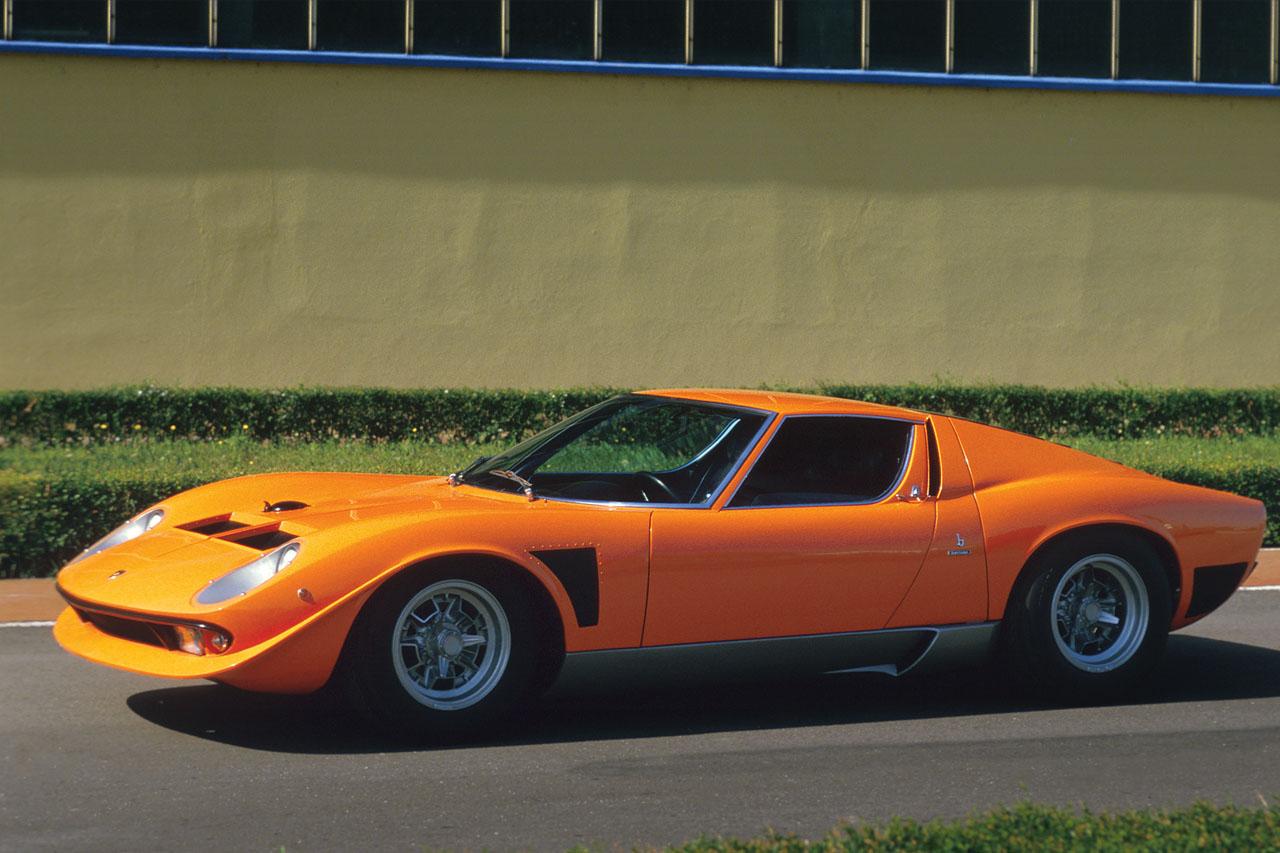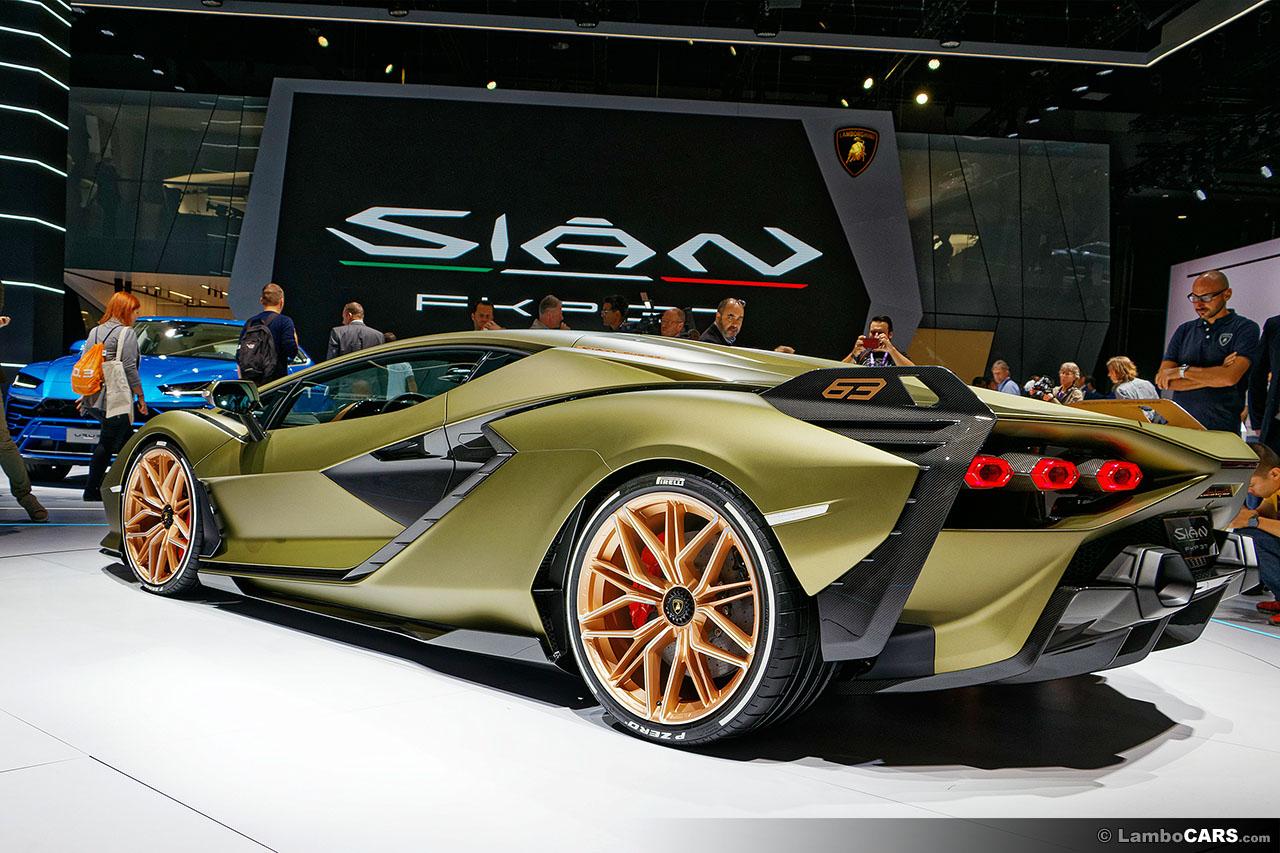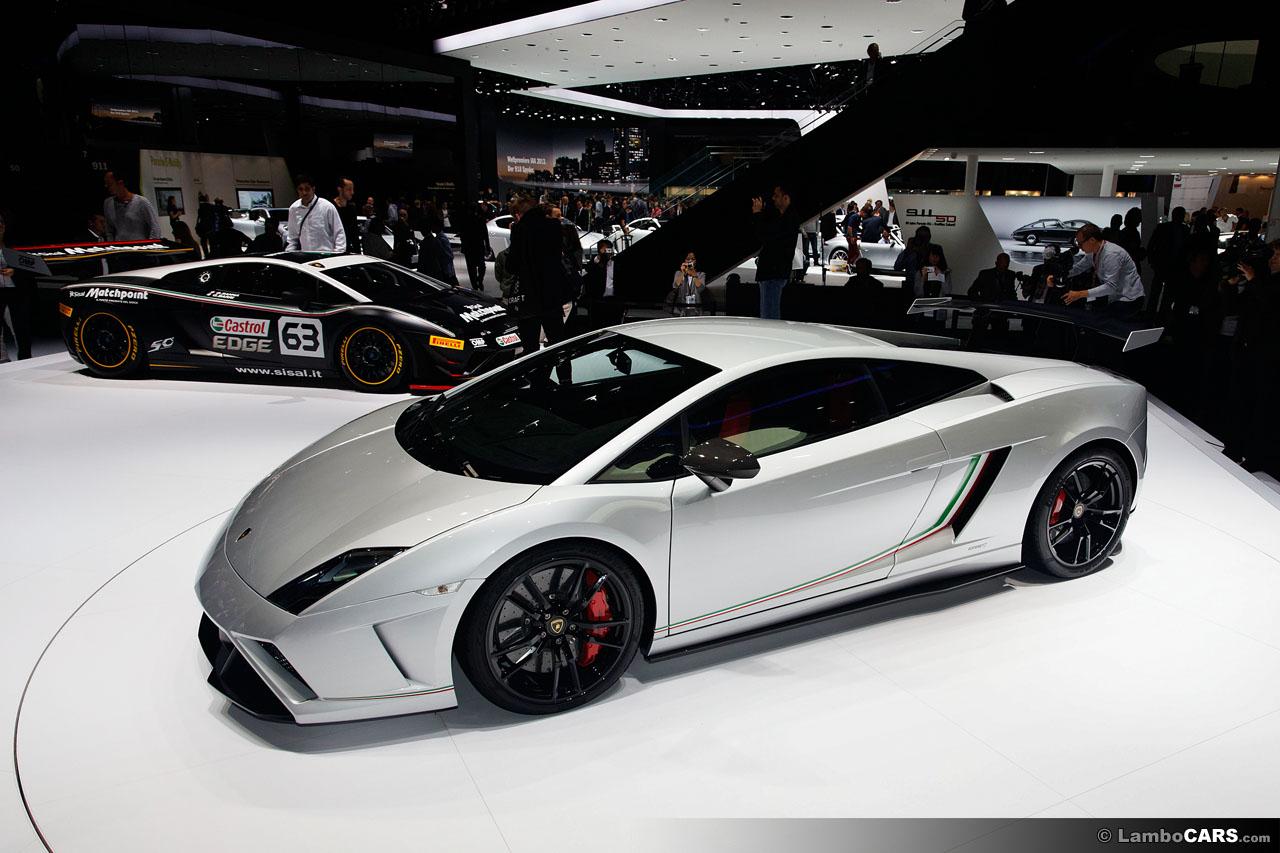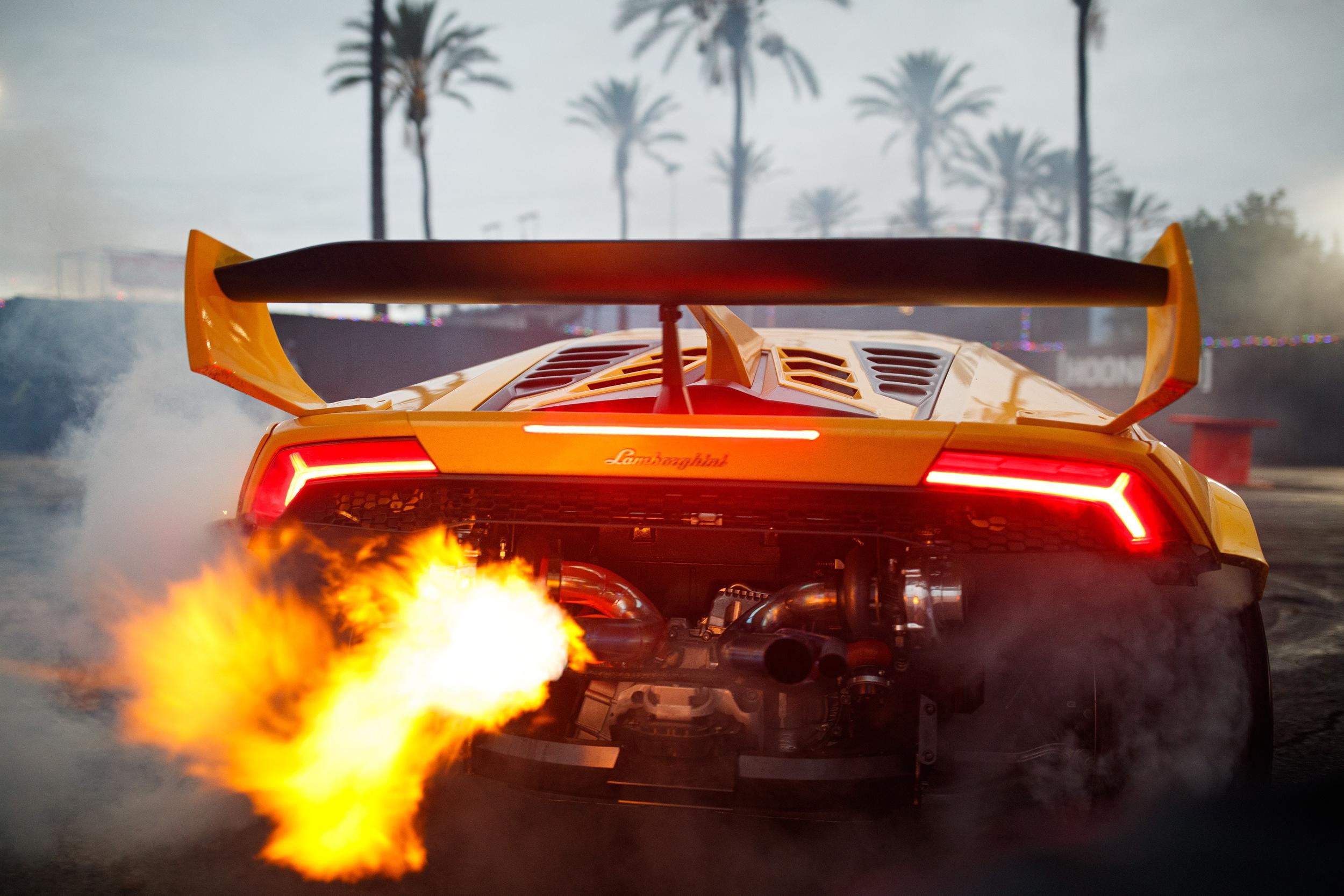For the discerning automotive enthusiast, few names evoke the passion, performance, and uniqueness that Lamborghini does. Over its storied history, this Italian marque has produced a remarkable line-up of models, with several standing out due to their exclusivity. Let’s delve into some of the rarest Lamborghinis ever made, exploring the engineering nuances and design philosophies that make each one special.
Lamborghini Diablo GT1 Stradale

Emerging from the illustrious lineage of the Diablo, the GT1 Stradale was more than just a road car—it was largely a race car tweaked for the street. Born from a collaboration between Lamborghini and the French racing team, Oreca, this car possessed aerodynamic refinements like adjustable rear wings and wider air intakes. Under the hood, its V12 engine pushed approximately 665 hp, making it one of the most powerful Diablos ever made. Given its uniqueness and limited production run, it fetched a price of over $1 million when initially released.
Expanding on the Lamborghini Diablo GT1 Stradale’s remarkable attributes, this model was not only an automotive masterpiece but also a symbol of engineering prowess. The car’s chassis was a radical departure from the standard Diablo, featuring extensive use of carbon fiber and other lightweight materials to enhance its performance. This resulted in a significant weight reduction, making the GT1 Stradale exceptionally agile and responsive. Its engine, a modified version of the Diablo’s 6.0-liter V12, was fine-tuned to achieve a breathtaking top speed of over 215 mph, placing it among the fastest cars of its era. The interior, while spartan compared to standard Diablos, included bespoke elements like racing seats and a stripped-down dashboard, emphasizing its race-bred heritage. Only two units of this rare model were ever produced, making it a highly coveted collector’s item among car enthusiasts and Lamborghini aficionados worldwide. Its blend of raw power, cutting-edge technology, and exclusive production has cemented the Diablo GT1 Stradale’s status as a legendary vehicle in Lamborghini’s storied history.
Lamborghini Miura SVJ

The Miura itself marked a revolutionary phase in Lamborghini’s history. The SVJ variant took things further, drawing inspiration from the Jota—a one-off test mule engineered by Lamborghini’s test driver, Bob Wallace. Boasting a 385 hp V12 engine, it came with performance and handling refinements. Wider fenders and a distinguishable SVJ badge made it easily recognizable. Given its rarity, the car’s value has soared, crossing the $2 million mark in auctions.
Delving deeper into the allure of the Lamborghini Miura SVJ, particularly the version tailored for Patrick Mimran, reveals a tale of bespoke craftsmanship and performance. Mimran, an influential figure in Lamborghini’s history, received a Miura SVJ that exemplified personalized luxury and speed. This car was not just a standard SVJ; it featured unique modifications that set it apart. The engine enhancements went beyond the standard 385 hp, including advanced carburetion and exhaust systems, which further amplified its power output and distinctive sound. The suspension was fine-tuned for sharper handling, making it more track-focused while retaining its roadworthiness. The interior of Mimran’s Miura SVJ was customized to his preferences, with exclusive materials and color schemes that highlighted its elegance and exclusivity. This level of customization, combined with the already limited number of Miura SVJs produced, has made this particular model a highly sought-after piece of automotive history. Its blend of groundbreaking design, bespoke features, and significant historical value contribute to its status as one of the most coveted classic cars, epitomizing Lamborghini’s dedication to innovation and luxury.
Lamborghini Reventón

Inspired by the fastest airplanes, the Reventón was a design marvel when it was unveiled in 2007. Named after a famed fighting bull, this car was a perfect blend of power and design. Only 20 were made, each with a 6.5-liter V12 producing 640 hp. Its angular design, coupled with a unique digital dashboard that offered both digital and analog displays, made it a favorite among enthusiasts. At its release, its asking price was a hefty $1.5 million.
The Lamborghini Reventón’s extraordinary allure lies not just in its limited production or formidable power, but also in its groundbreaking technological advancements and meticulous craftsmanship. The car’s exterior, with its sharp lines and stealth fighter-like aesthetics, was not merely for show. It was engineered to optimize aerodynamics, enhancing stability at high speeds and improving overall performance. The interior echoed the exterior’s futuristic design, with materials like carbon fiber and Alcantara used extensively to combine luxury with lightness. The Reventón’s performance was equally impressive, capable of accelerating from 0 to 60 mph in just 3.4 seconds, with a top speed of over 205 mph. This made it one of the fastest and most exclusive Lamborghinis at the time. Its rarity and technological prowess have made the Reventón a symbol of the brand’s commitment to pushing the boundaries of automotive design and engineering. Collectors and enthusiasts regard it as a milestone in Lamborghini’s history, a car that perfectly encapsulates the spirit of innovation and excellence that defines the marque.
Lamborghini Veneno

Unveiled for Lamborghini’s 50th anniversary, the Veneno’s design was extreme, even by Lamborghini standards. Its name, meaning “poison” in Spanish, reflected its aggressive stance. With a 6.5-liter V12 pushing 740 hp and aerodynamics optimized for high-speed stability, it was a track monster ready for the road. Priced at around $4 million, only a handful of Venenos were ever made.
The Lamborghini Veneno stands as a testament to Lamborghini’s relentless pursuit of automotive perfection, combining extreme power with groundbreaking aerodynamics. Its design, characterized by sharp angles and an aggressive, futuristic look, was not just visually striking but also functionally significant. The car’s bodywork was crafted to act like an aerodynamic wing, generating downforce without the need for additional external elements. This design philosophy extended to details like the Y-shaped headlights and the distinctive wheel arches, each contributing to its unparalleled performance. Inside, the Veneno featured a minimalist yet high-tech cockpit, with materials like carbon fiber and Alcantara dominating the space, emphasizing both luxury and functionality. The 6.5-liter V12 engine, paired with a sophisticated ISR transmission, allowed the Veneno to achieve a breathtaking top speed of 221 mph, making it one of the fastest supercars of its time. Its exclusivity was underscored by its limited production run, with only a few models ever created, each a unique piece of automotive art. The Veneno’s legacy is not just in its rarity or price tag, but in its embodiment of Lamborghini’s dedication to innovation, design, and sheer performance.
Lamborghini Sesto Elemento

Unveiled at the 2010 Paris Motor Show, the Sesto Elemento (“Sixth Element” in Italian, referencing carbon’s position on the periodic table) was a technological tour de force. Weighing just 999 kg, thanks to extensive carbon-fiber use, and powered by a 570 hp V10, it could dash from 0-60 mph in a mere 2.5 seconds. Originally, this car was not intended for road use but rather as a demonstration of Lamborghini’s carbon-fiber expertise.
The Lamborghini Sesto Elemento’s significance extends beyond its impressive statistics, embodying a radical approach to automotive engineering and design. This car was a bold statement in the use of advanced materials, with its chassis, body, drive shaft, and suspension components all made from carbon-fiber-reinforced polymer (CFRP). This extensive use of carbon fiber was not just about reducing weight; it was about redefining what a supercar could be. The Sesto Elemento’s power-to-weight ratio was unparalleled, offering a driving experience that was both visceral and exhilarating. The design echoed this focus on performance and technology, with an aesthetic that was both aggressive and functional, featuring aerodynamic elements that improved handling and stability at high speeds. The interior was stripped down to the essentials, with no compromises on comfort or safety, but a clear focus on providing a pure, unadulterated driving experience. Though not intended for the road, the Sesto Elemento’s impact was felt across the automotive world, influencing future designs and technologies in supercars. It stands as a pinnacle of Lamborghini’s innovation, a car that goes beyond mere speed and luxury to represent the cutting edge of automotive design and engineering.
Lamborghini Concept S

Introduced at the 2005 Geneva Motor Show, the Concept S was Luc Donckerwolke’s radical interpretation of an open Gallardo. Its most striking feature was the ‘saute-vent’ (French for ‘change wind’) twin cockpit design, dividing the car into two separate compartments. Although initially planned for a limited production, only the prototype was built.
The Lamborghini Concept S, designed by Luc Donckerwolke, stands as a remarkable example of innovative automotive design, pushing the boundaries of what a sports car could look like. The ‘saute-vent’ twin cockpit design was not just a striking aesthetic feature but also a functional one, designed to channel air over the car’s body in a unique way, reducing drag and improving aerodynamics. This design resulted in a distinct, futuristic appearance, making the Concept S instantly recognizable and a showcase of Lamborghini’s design capabilities. Beyond its unique exterior, the Concept S was built on the proven mechanicals of the Gallardo, ensuring impressive performance. The car’s engine, a 5.0-liter V10, was capable of delivering exhilarating speed and power, true to Lamborghini’s performance heritage. Despite its potential for limited production, the fact that only the prototype was built has added to the Concept S’s mystique, making it a highly coveted piece among collectors and enthusiasts. Its existence as a singular prototype exemplifies Lamborghini’s dedication to exploring new ideas and concepts in car design, marking the Concept S as a significant milestone in the brand’s rich history of automotive innovation.
Lamborghini Sian FKP37

Marking Lamborghini’s entry into the hybrid era, the Sian (meaning “flash” or “lightning” in Bolognese dialect) was the brand’s most powerful car at its launch. Using a V12 combined with a 48V electric motor, it delivered a combined 819 hp. Notably, the electric motor assists during low-speed maneuvers, eliminating traditional turbo lag.
The Lamborghini Sian FKP37 represents a groundbreaking step in Lamborghini’s journey, embodying their foray into hybrid technology without compromising the marque’s renowned performance ethos. The use of a hybrid system in the Sian was a strategic choice, aimed at enhancing the car’s performance rather than focusing solely on efficiency. The 48V electric motor, integrated into the gearbox, provides instant torque, augmenting the already formidable power of the V12 engine. This synergy results in a seamless driving experience, with the electric motor smoothing out power delivery and enhancing acceleration.
Design-wise, the Sian FKP37 carries Lamborghini’s signature style into the future. Its design cues, inspired by the Countach, blend classic Lamborghini lines with futuristic elements, highlighting its status as a bridge between Lamborghini’s past and future. The car’s innovative use of supercapacitors, instead of traditional batteries, for its hybrid system is another testament to Lamborghini’s commitment to innovation. Supercapacitors offer a lighter, more efficient means of storing energy, perfectly aligning with the Sian’s ethos of high performance and cutting-edge technology.
Limited to just 63 units, a nod to the company’s founding in 1963, the Sian FKP37 is not just a high-performance hybrid supercar, but a collector’s item that represents a pivotal moment in Lamborghini’s history. Its blend of raw power, advanced technology, and striking design make it a milestone in the evolution of supercars, showcasing what is possible when tradition and innovation converge.
Lamborghini Aventador LP720-4 50 Anniversario

Celebrating the 50th anniversary of Lamborghini, the Aventador LP720-4 50 Anniversario was a special edition that sought to merge legacy with innovation. Limited to only 100 units worldwide, it demonstrated Lamborghini’s commitment to exclusivity. Under its hood, the car boasted a 720 hp V12 engine, a slight bump from the standard Aventador’s power. It wasn’t just about the increased horsepower; the car also featured exclusive paint options—most notably the bright yellow ‘Giallo Maggio’. Alongside these hues, its design incorporated enhanced aerodynamic elements. The front and rear bumpers received special treatments, improving downforce and airflow. In essence, it was the Aventador, reimagined for a special occasion, a blend of the company’s illustrious past and its forward-thinking future.
The Lamborghini Aventador LP720-4 50 Anniversario stands as a quintessential example of Lamborghini’s ability to blend heritage with cutting-edge innovation, marking a half-century of the brand’s automotive excellence. This special edition went beyond mere cosmetic changes, embodying a deep commitment to enhancing performance and design. The increase to 720 hp in the V12 engine not only offered a boost in power but also ensured a more exhilarating driving experience, with improved acceleration and a higher top speed. This power was complemented by sophisticated handling dynamics, ensuring that the car’s performance was as impressive as its appearance.
The exclusive ‘Giallo Maggio’ paint option was a tribute to the brand’s history, as most Lamborghinis sold since the company’s inception were finished in various shades of yellow. This choice was symbolic, reflecting the brand’s vibrant and bold character. Additionally, the aerodynamic enhancements to the front and rear bumpers were not just aesthetic improvements but functional upgrades that improved stability and efficiency at high speeds.
The Aventador LP720-4 50 Anniversario’s interior also received special attention, with exclusive materials and bespoke details that highlighted its limited-edition status. Each unit was a celebration of Lamborghini’s design and engineering prowess, a tangible link between the company’s storied past and its ambitious future. As a collector’s item and a technological marvel, the Aventador LP720-4 50 Anniversario exemplified the essence of Lamborghini: a relentless pursuit of perfection, combining breathtaking performance with unmistakable style.
Lamborghini Gallardo Squadra Corse

The Gallardo holds a special place in Lamborghini’s lineup as one of its longest-running and most successful models. As the sun was setting on the Gallardo’s production, Lamborghini decided to send it off with a tribute to its racing achievements. The Squadra Corse was named after Lamborghini’s motorsport division and was heavily influenced by the Super Trofeo race series. Housing a 570 hp V10 engine, it was a force to be reckoned with on the road. Its design cues, from the large rear wing to the quick-release engine hood, were direct nods to its track sibling. The contrasting colors on the rear wing and the wheels made it instantly recognizable. Inside, carbon fiber and Alcantara adorned the cabin, making it a performance-oriented yet luxurious space. The Gallardo Squadra Corse was, in many ways, a celebration of Lamborghini’s racing spirit.
The Lamborghini Gallardo Squadra Corse epitomized the fusion of Lamborghini’s racing pedigree with its road car expertise, offering a fitting homage to the Gallardo’s storied legacy. This model was more than just a final edition; it was a distillation of everything that made the Gallardo a legend in the automotive world. The influence of the Super Trofeo race series was evident in every aspect of its design and engineering, making it a true race car for the road.
The 570 hp V10 engine was a masterpiece of power and responsiveness, providing an exhilarating driving experience that was both raw and refined. This power was complemented by a lightweight construction, with extensive use of carbon fiber throughout the vehicle, reducing the weight and enhancing the power-to-weight ratio, crucial for a car with such racing aspirations. The large rear wing and quick-release engine hood were not just aesthetic elements but also functional, improving aerodynamics and providing better cooling, respectively.
The interior of the Gallardo Squadra Corse was a testament to Lamborghini’s commitment to blending performance with luxury. The use of carbon fiber and Alcantara created an environment that was both sporty and sophisticated, reflecting the car’s dual nature as a track performer and a road car. The contrasting colors on the rear wing and wheels were not only visually striking but also a nod to the brand’s flair for style.
Limited in production, the Gallardo Squadra Corse was a symbol of Lamborghini’s racing heritage and a celebration of one of its most iconic models. It represented the culmination of the Gallardo’s evolution, a vehicle that was as much at home on the racetrack as it was on the street, embodying the spirit and passion that are hallmarks of the Lamborghini brand.
Lamborghini Aventador J

Unveiled at the 2012 Geneva Motor Show, the Aventador J was a daring interpretation of open-top driving. Stripping away the roof and the front windshield, this one-off creation aimed to offer an unparalleled driving experience akin to piloting a road-going fighter jet. At its heart was the same powerful 700 hp V12 from the Aventador. The ‘J’ in its name was derived from the FIA’s Appendix J, which dictates technical specifications for race cars. With extensive use of carbon fiber, including the patented ‘Carbonskin’ material on the interior, the Aventador J was not only lightweight but also showcased Lamborghini’s craftsmanship and innovation.
The Lamborghini Aventador J stands as a bold statement in automotive design, pushing the boundaries of what an open-top supercar can be. This one-off creation exemplifies Lamborghini’s willingness to explore extreme design concepts, delivering an experience that is unparalleled in the realm of high-performance cars. The decision to remove the roof and the front windshield was a radical move, creating a sense of freedom and intensity that is rare in modern supercars. This design choice was about more than just aesthetics; it was about immersing the driver in the environment, offering a driving experience that was both exhilarating and visceral.
Powered by the same 700 hp V12 engine found in the standard Aventador, the Aventador J provided breathtaking performance. This engine, combined with the car’s significantly reduced weight due to the extensive use of carbon fiber, resulted in a supercar that was incredibly fast and agile. The patented ‘Carbonskin’ material used in the interior was not just a showcase of Lamborghini’s commitment to innovation but also contributed to the vehicle’s weight reduction, further enhancing its performance.
The Aventador J’s design was a mix of beauty, aggression, and sophistication. Its lines were sleek and fluid, with aerodynamic efficiency playing a key role in its layout. The ‘J’ in its name, referencing the FIA’s Appendix J, was a nod to its racing-inspired heritage, underlining the car’s performance-focused ethos. This unique vehicle was more than just a car; it was a moving piece of art, a representation of Lamborghini’s passion for pushing the limits of design and engineering. As a one-off model, the Aventador J became an instant icon, a testament to what can be achieved when creativity and engineering excellence converge.
Lamborghini SC18 Alston

The SC18 Alston stands as a testament to Lamborghini’s commitment to customer customization. This one-off project was developed in close collaboration with a customer, with input directly from Lamborghini’s Squadra Corse racing division. The car is based on the Aventador but draws design inspirations from models like the Huracán GT3 EVO and the Veneno. Powered by a 6.5-liter V12, producing 770 hp, it was designed with track performance in mind but is also road-legal. Unique features include a massive air intake, a large carbon-fiber rear wing, and specially developed wheels. It’s a true example of Lamborghini’s bespoke capabilities.
The Lamborghini SC18 Alston represents the pinnacle of personalized supercar design, showcasing Lamborghini’s ability to create bespoke masterpieces tailored to the specific desires of their clients. This unique vehicle, born from the collaboration between a discerning customer and Lamborghini’s Squadra Corse racing division, is a harmonious blend of Lamborghini’s best design elements and racing technology. The influence of the Huracán GT3 EVO and the Veneno is evident in its aggressive and aerodynamically focused design, making it a standout even among Lamborghini’s extraordinary lineup.
At the heart of the SC18 Alston lies the formidable 6.5-liter V12 engine, tuned to deliver a staggering 770 hp. This power, coupled with advanced aerodynamics, including the massive air intake and the large carbon-fiber rear wing, ensures that the SC18 Alston is not just a showpiece but a high-performance machine capable of dominating both the race track and the road. The specially developed wheels add to this performance, providing better grip and handling, crucial for a car with such track-oriented aspirations.
The interior of the SC18 Alston is equally impressive, with bespoke elements that reflect the individuality of its owner. Every aspect of this car was meticulously crafted to meet the specific tastes and performance requirements of the client, demonstrating Lamborghini’s exceptional capabilities in creating one-of-a-kind vehicles.
The SC18 Alston is not just a car; it is a symbol of Lamborghini’s commitment to customization, engineering excellence, and the brand’s deep understanding of what makes a true supercar. It’s a testament to the automaker’s ability to push the limits of design, performance, and exclusivity, embodying the very essence of the Lamborghini spirit.
Lamborghini SC20

The SC20 is another one-of-a-kind creation from Lamborghini, exemplifying the brand’s prowess in crafting unique vehicles. A roofless, windshield-less design, the SC20 was designed as a road car that offers a track-like experience. Drawing design cues from the likes of the Sian, the car boasts a 770 hp V12 engine. The aerodynamically optimized body and unique livery showcase Lamborghini’s attention to detail and the lengths the brand goes to in order to cater to the desires of its clientele.
The Lamborghini SC20 is a bespoke masterpiece that underscores Lamborghini’s unwavering commitment to crafting exclusive vehicles that push the boundaries of automotive design and performance. This one-of-a-kind creation is a testament to the brand’s ability to turn dreams into reality, as it was meticulously designed in close collaboration with a discerning customer who sought a truly unique driving experience.
The SC20’s radical design, with no roof or windshield, is a bold statement of Lamborghini’s dedication to delivering an open-air driving experience akin to a track car. Drawing inspiration from the Sian and other Lamborghini models, the SC20’s design is a symphony of aerodynamic efficiency and aesthetic finesse. Its sleek lines and meticulously sculpted bodywork are not just for show; they contribute to the car’s exceptional performance on both the road and the track.
Under the SC20’s rear deck lies a potent 770 hp V12 engine, delivering spine-tingling power and acceleration. This engine is the beating heart of a machine engineered to provide a visceral driving experience that few other cars can match. The aerodynamics have been meticulously optimized, ensuring that the SC20 sticks to the road with tenacity, even at high speeds.
The SC20’s unique livery is a work of art, showcasing Lamborghini’s attention to detail and the brand’s willingness to go to great lengths to cater to the desires of its clientele. Every inch of this car reflects the owner’s vision, making it a true automotive masterpiece.
Lamborghini P400 Jota

The story of the P400 Jota is one of tragedy and rebirth. Initially crafted by Lamborghini’s test driver, Bob Wallace, as an upgraded, race-ready version of the Miura, the original Jota met a tragic end in an accident. However, its legend led to several Miura owners requesting Jota modifications on their vehicles. While not a production car, its legacy is a testament to the performance potential of the Miura, with extensive modifications, including weight-saving measures and aerodynamic tweaks.
The Lamborghini P400 Jota, often referred to simply as the “Miura Jota,” is a legendary chapter in Lamborghini’s history that emerged from a tragic beginning and went on to inspire a wave of high-performance modifications for the iconic Miura.
The story begins with Bob Wallace, Lamborghini’s test driver, who envisioned the Miura as a race-ready powerhouse. Wallace’s vision came to life with the creation of the Miura Jota, a heavily modified version of the Miura designed for the track. This car featured extensive weight-saving measures, aerodynamic enhancements, and engine tuning, all aimed at maximizing performance on the race circuit. With its distinctive appearance and enhanced capabilities, the Miura Jota was a formidable contender on the track.
However, tragedy struck when the original Miura Jota was involved in a devastating accident. While this marked the end of the car’s racing career, its legend lived on. The Miura Jota’s performance potential and iconic status inspired other Miura owners to seek similar modifications for their vehicles. These Miura “Jota” conversions became sought-after upgrades, allowing owners to transform their Miuras into high-performance machines.
Lamborghini Calà

Unveiled at the 1995 Geneva Motor Show, the Calà was intended as a successor to the Jalpa, aiming to slot below the Diablo in Lamborghini’s lineup. Designed by Italdesign Giugiaro, the car was a departure from the edgy designs Lamborghini was known for, featuring a more rounded and streamlined appearance. Powered by a 4.0-liter V10, the Calà was anticipated to bring a new generation of enthusiasts into the Lamborghini fold. However, financial constraints meant the project never moved beyond the concept stage.
The Lamborghini Calà, unveiled at the 1995 Geneva Motor Show, marked an intriguing departure from Lamborghini’s signature design language and was poised to bring a fresh perspective to the brand’s lineup. Designed by the renowned Italdesign Giugiaro, the Calà was conceived as a successor to the Jalpa, positioned to slot below the formidable Diablo.
In terms of design, the Calà showcased a departure from the sharp, angular aesthetics that Lamborghini was known for at the time. Instead, it featured a more rounded and streamlined appearance, reflecting a shift towards a softer and more contemporary design language. This design choice was aimed at attracting a new generation of enthusiasts to the Lamborghini brand while still retaining the essence of Italian sports car excellence.
Under its hood, the Calà was equipped with a 4.0-liter V10 engine, promising the kind of performance that Lamborghini enthusiasts had come to expect. The intent was clear: to offer a more accessible Lamborghini, both in terms of pricing and usability, without compromising on the thrill of driving a Lamborghini.
However, despite the initial excitement and anticipation surrounding the Calà, financial constraints ultimately prevented the project from progressing beyond the concept stage. While the Calà never made it to production, it remains a fascinating chapter in Lamborghini’s history, representing the brand’s willingness to explore new design directions and broaden its appeal while staying true to its performance-oriented DNA.
Lamborghini Egoista

The Egoista, meaning “selfish” in Italian, was a fitting name for this single-seater concept. Celebrating Lamborghini’s 50th anniversary in 2013, it was inspired by the world of aviation, particularly fighter jets. The Egoista featured a unique canopy door reminiscent of aircraft cockpits and a 5.2-liter V10 engine with 600 hp. The exterior, with its aggressive lines, active aerodynamics, and extensive use of aluminum and carbon fiber, was as audacious as any Lamborghini that came before it. While it remains a concept and is not road-legal, the Egoista is housed at Lamborghini’s museum for enthusiasts to admire.
The Lamborghini Egoista, a concept car unveiled in 2013 to celebrate the brand’s 50th anniversary, is a true embodiment of its name, which means “selfish” in Italian. This single-seater marvel drew inspiration from the world of aviation, particularly the sleek and powerful design of fighter jets, resulting in a car that exuded a sense of unapologetic extravagance.
One of the most striking features of the Egoista was its unique canopy-style door, reminiscent of aircraft cockpits. This design choice not only added to the car’s aviation-inspired aesthetic but also emphasized the exclusivity and individuality of the driving experience. Behind the driver’s seat lay a potent 5.2-liter V10 engine, delivering a commanding 600 hp, ensuring that the Egoista’s performance matched its audacious design.
The exterior of the Egoista was a work of art, with aggressive lines and active aerodynamics that could adapt to different driving conditions. The extensive use of lightweight materials such as aluminum and carbon fiber not only reduced weight but also added to the car’s futuristic and exotic appeal.
It’s important to note that the Egoista, while a marvel of automotive design, was never intended for road use and remains a concept car. Nevertheless, it has found a permanent home at Lamborghini’s museum, where it serves as a testament to the brand’s creativity, innovation, and willingness to push the boundaries of automotive design. Enthusiasts and visitors can admire this extraordinary creation, which represents the pinnacle of Lamborghini’s commitment to delivering unique and unforgettable driving experiences.



